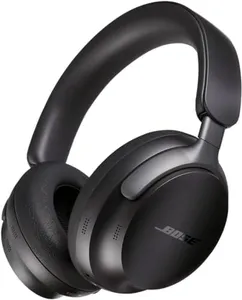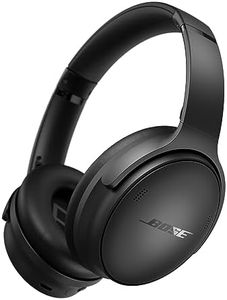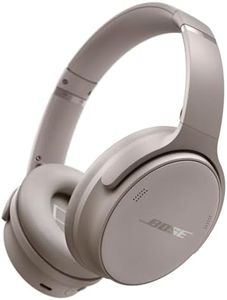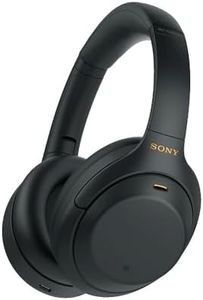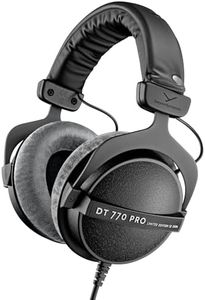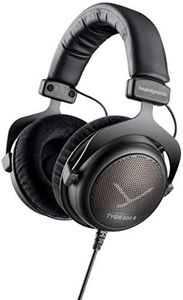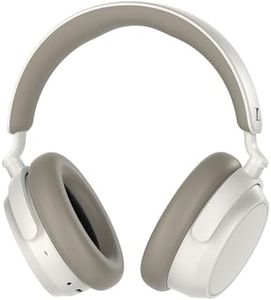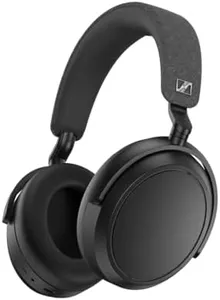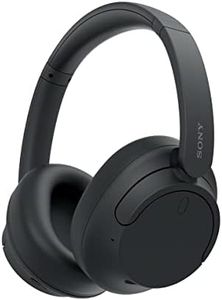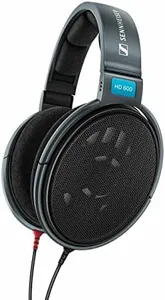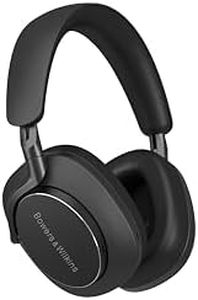We Use CookiesWe use cookies to enhance the security, performance,
functionality and for analytical and promotional activities. By continuing to browse this site you
are agreeing to our privacy policy
10 Best Overear Headphones
From leading brands and best sellers available on the web.Buying Guide for the Best Overear Headphones
Choosing the right over-ear headphones can really enhance your listening experience, whether you're into music, gaming, or just want to block out the noise around you. Start by thinking about when and where you'll use your headphones most: Are you commuting, working at home, or just enjoying your favorite tunes in comfort? Knowing your main use case helps narrow down the features that matter most to you. The key is to balance comfort, sound quality, and the right set of features tailored to your lifestyle.Sound Quality (Frequency Response and Drivers)Sound quality indicates how good the headphones are at reproducing audio as it’s intended to be heard. The frequency response tells you how well the headphones handle different pitches, while the drivers are the components that actually create the sound. Wider frequency responses can mean more detailed sound, but human ears generally hear best in the 20Hz to 20kHz range. Larger drivers (usually measured in millimeters) often mean stronger bass and overall louder output. If you love deep, punchy music, look for headphones that cover the low end well and have larger drivers. For balanced or critical listening (like classical music or podcasts), accuracy across the spectrum matters more.
Comfort and FitComfort is all about how the headphones feel during long listening sessions. Over-ear headphones should have cushioned ear pads and an adjustable headband. Lighter headphones are generally less tiring to wear, especially for hours on end. People with glasses or sensitive ears may want to seek softer, plush pads. If you’ll be wearing headphones for extended periods, prioritize lightweight designs with ample padding and an adjustable fit.
Noise Cancellation (Active and Passive)Noise cancellation helps block or reduce unwanted sounds. Passive noise isolation relies on the ear cups physically blocking noise, while active noise cancellation (ANC) uses technology to cancel out ambient sounds. ANC is very useful in busy environments like planes or offices. If you need peace in noisy places, ANC may be important. If you mostly use headphones at home in quiet spots, basic passive isolation might be enough.
Wired vs. Wireless (Connectivity Options)This spec determines how your headphones connect to devices. Wired headphones plug in directly, which generally means no need for charging and possibly better sound quality, but less mobility. Wireless headphones use Bluetooth, offering more freedom of movement but require charging. Some models offer both options for flexibility. Choose wireless for movement and convenience, wired for simplicity and if you don’t want to worry about battery life.
Battery LifeBattery life is crucial if you go wireless, telling you how long the headphones work between charges. Battery life can range widely, from just a few hours to upwards of 30 or more. If you travel often or use your headphones all day, look for longer battery life. If you only use headphones occasionally, shorter battery life may be sufficient.
Build Quality and PortabilityBuild quality covers how sturdy the headphones feel and how well they handle everyday use. Materials like metal and high-quality plastic add durability. Portability refers to whether they can fold or come with a carrying case, making them easier to pack. If you’re often on the go, foldable designs and a carrying case are practical. If you mostly stay in one place, heavier, more robust headphones may be just fine.
Microphone and ControlsSome headphones include a microphone and on-ear controls for hands-free calls or adjusting music without reaching for your phone. For work calls, gaming, or chatting, a good microphone is a must. Controls on the headphones make it easier to manage volume or change tracks on the fly. Decide based on whether you’ll use your headphones for communication or only for listening.
